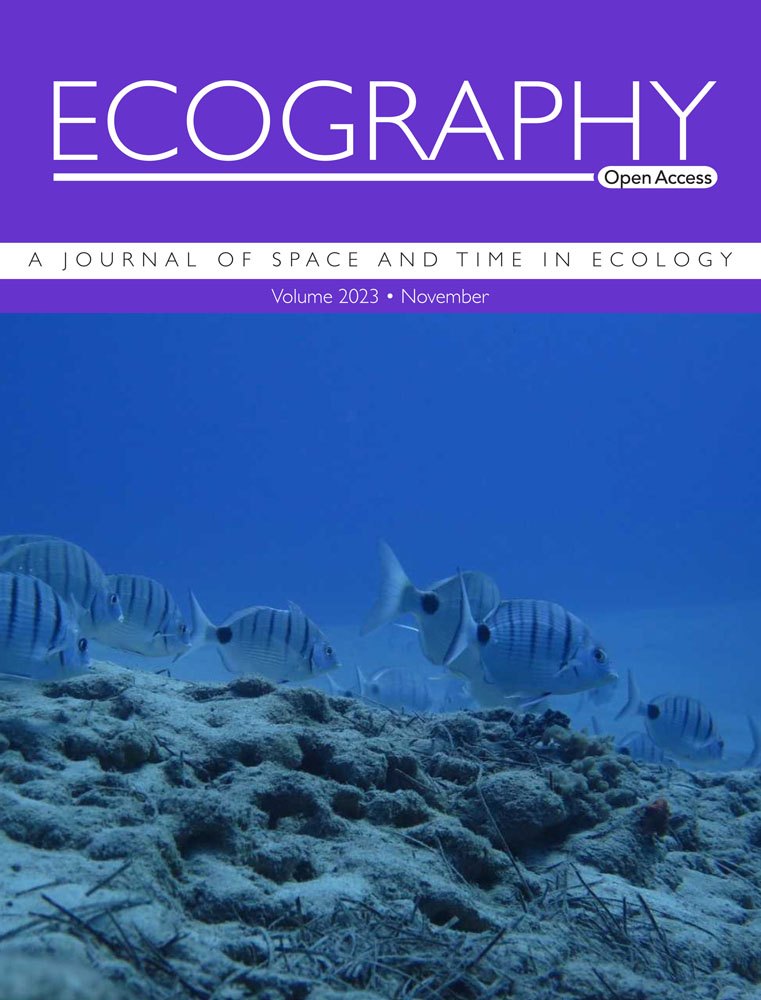A pattern-oriented simulation for forecasting species spread through time and space: a case study on an ecosystem engineer on the move
IF 5.4
1区 环境科学与生态学
Q1 BIODIVERSITY CONSERVATION
引用次数: 0
Abstract
Modelling the spread of introduced ecosystem engineers is a conservation priority due to their potential to cause irreversible ecosystem-level changes. While existing models predict potential distributions and spread capacities, new approaches that simulate the trajectory of a species' spread over time are needed. We developed novel simulations that predict spatial and temporal spread, capturing both continuous diffusion-dispersal and occasional long-distance leaps. We focused on the introduced population of superb lyrebird Menura novaehollandiae in Tasmania, Australia. Initially introduced as an insurance population, lyrebirds have become novel bioturbators, spreading across key natural areas and becoming ‘unwanted but challenging to eradicate'. Using multi-scale ecological data, our research 1) identified broad and fine-scale correlates of lyrebird occupation and 2) developed a spread simulation guided by a pattern-oriented framework. This occurrence-based modelling framework is useful when demographic data are scarce. We found that the cool, wet forests of western Tasmania with open understoreys offer well-connected habitats for lyrebird foraging and nesting. By 2023, lyrebirds had reached quasi-equilibrium within a core range in southern Tasmania and were expanding northwest, with the frontier reaching the western coast. Our model forecasts that by 2085, lyrebirds will have spread widely across suitable regions of western Tasmania. By pinpointing current and future areas of lyrebird occupation, we provide land managers with targeted locations for monitoring the effects of their expansion. Further, our area of applicability (AOA) analysis identified regions where environmental variables deviate from the training data, guiding future data collection to improve model certainty. Our findings offer an evidence-based approach for future monitoring and provide a framework for understanding the dynamics of other range-expanding species with invasive potential.预测物种在时间和空间中传播的模式导向模拟:移动中的生态系统工程师的案例研究
对引进的生态系统工程师的传播进行建模是一项保护优先事项,因为它们有可能导致不可逆转的生态系统水平变化。虽然现有的模型预测潜在的分布和传播能力,但需要新的方法来模拟物种随时间的传播轨迹。我们开发了新的模拟,预测空间和时间的扩散,捕捉连续扩散和偶尔的长距离跳跃。我们重点研究了澳大利亚塔斯马尼亚州引进的极好的七琴鸟Menura novaehollandiae种群。最初作为保险种群引入的七弦琴已经成为一种新型的生物扰动者,在关键的自然区域传播,成为“不受欢迎但难以根除的”。利用多尺度的生态数据,我们的研究1)确定了琴鸟职业的广泛和精细尺度的相关性;2)开发了一个以模式为导向的框架指导下的传播模拟。这种基于事件发生的建模框架在人口统计数据匮乏时非常有用。我们发现,塔斯马尼亚西部凉爽潮湿的森林和开阔的林下植被为琴鸟觅食和筑巢提供了良好的栖息地。到2023年,在塔斯马尼亚州南部的一个核心范围内,琴鸟已经达到了准平衡,并向西北扩展,边界到达西海岸。我们的模型预测,到2085年,七弦琴将在塔斯马尼亚西部合适的地区广泛传播。通过精确定位当前和未来的琴鸟栖息地,我们为土地管理者提供了监测其扩张影响的目标地点。此外,我们的适用区域(AOA)分析确定了环境变量偏离训练数据的区域,指导未来的数据收集以提高模型的确定性。我们的发现为未来的监测提供了一种基于证据的方法,并为了解其他具有入侵潜力的范围扩张物种的动态提供了一个框架。
本文章由计算机程序翻译,如有差异,请以英文原文为准。
求助全文
约1分钟内获得全文
求助全文
来源期刊

Ecography
环境科学-生态学
CiteScore
11.60
自引率
3.40%
发文量
122
审稿时长
8-16 weeks
期刊介绍:
ECOGRAPHY publishes exciting, novel, and important articles that significantly advance understanding of ecological or biodiversity patterns in space or time. Papers focusing on conservation or restoration are welcomed, provided they are anchored in ecological theory and convey a general message that goes beyond a single case study. We encourage papers that seek advancing the field through the development and testing of theory or methodology, or by proposing new tools for analysis or interpretation of ecological phenomena. Manuscripts are expected to address general principles in ecology, though they may do so using a specific model system if they adequately frame the problem relative to a generalized ecological question or problem.
Purely descriptive papers are considered only if breaking new ground and/or describing patterns seldom explored. Studies focused on a single species or single location are generally discouraged unless they make a significant contribution to advancing general theory or understanding of biodiversity patterns and processes. Manuscripts merely confirming or marginally extending results of previous work are unlikely to be considered in Ecography.
Papers are judged by virtue of their originality, appeal to general interest, and their contribution to new developments in studies of spatial and temporal ecological patterns. There are no biases with regard to taxon, biome, or biogeographical area.
 求助内容:
求助内容: 应助结果提醒方式:
应助结果提醒方式:


